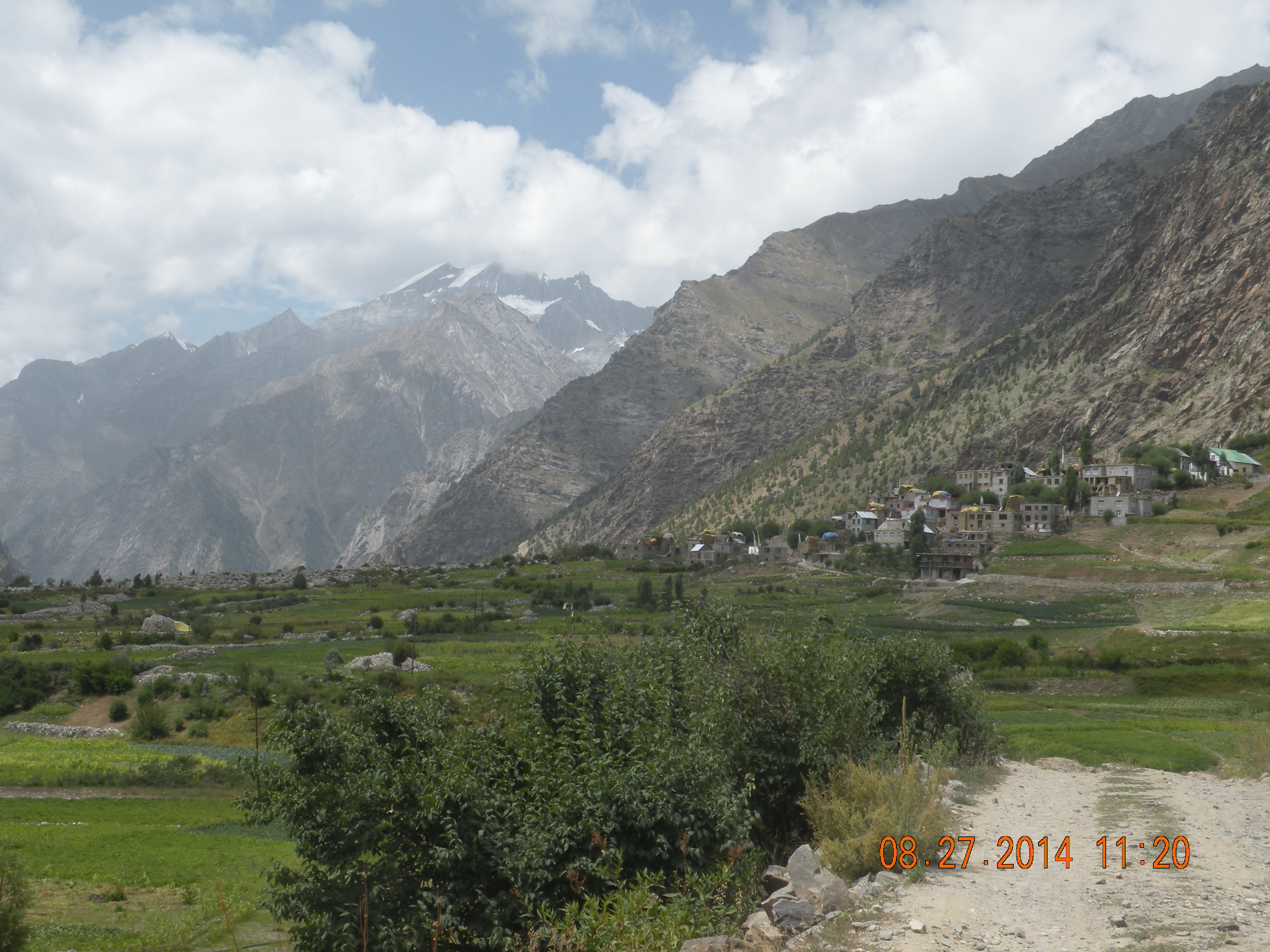Narratives on Hydropower ‘development’ from Lahaul Valley
5th June 2015
On occasion of the World Environment Day, Himdhara, an Environment Research and Action Collective released a report titled ‘Changing the Colours of Chenab’ on ‘hydropower development’ in the Lahaul Valley. Highlighting local sentiment and probable adverse impacts of the proposed projects in the Chandra-Bhaga or Chenab basin in Lahaul, the report raises questions about “Himachal Pradesh’s uninterrupted quest to lead the ambitious hydropower development mission in the Himalayas”.
The Chenab River Basin is the last frontier of Hydropower development in Himachal, the only large river basin where Hydroprojects are still to come up. But this will change soon. The Chenab in J&K is already choked with hydro-projects like 660 MW Kiru, 560 MW Kwar and several others proposed in a cascade. In Himachal’s 130 kms stretch of the Chenab (falling in Lahaul and Chamba Districts), 49 hydro-projects are under different stages of implementation, most of these being in the Lahaul Valley.
“Through this document we attempt to highlight some of these issues and thoughts voiced by people of Lahaul Valley vis-à-vis hydropower. Familiar with the hydropower ‘development’ experiences in other basins and districts, especially Kinnaur we have observed that Lahauli’s are beginning to express concerns about the uneven development these projects are capable of. Many are anxious, staging protests, boycotting surveys and consultations and very few equate hydropower with prosperity”, state authors of the report.
In Lahaul, the Miyar Project is in the most advanced stage with the Environment Clearance granted and Land acquisition process completed. People in these areas expressed apprehensions about hydropower development because of recurring floods, cloudbursts and avalanches making the area too fragile for construction activity. Apart from the Miyar project, the other two projects in Lahaul, which are in the advanced stages of planning and clearance, are the 400 MW Seli and 300 MW Jispa. But unlike the Miyar project, people in the affected villages around these two projects seemed very well mobilised with public opinion totally against its construction. In Udaipur, the opposition against 400 MW Seli, another one by Hindustan Private Limited remains strong because of the probable impacts on agricultural land and forests. Even in villages like Rashil, where the 130 MW Rashil project is proposed, several resolutions have been passed against the project by the Gram Panchayat.
The valley witnessed its latest protest at a stakeholder consultation conducted by the Department Of Energy for Chenab’s Cumulative Environment Impact Assessment (CEIA) on 29th October, 2014 at Killar, Keylong and Pangi regions of Lahaul-Spiti and Chamba. The opposition of local people and environment groups at the consultation testifies people’s apprehensions about hydropower development in the valley. It seems like people believe that the government is not serious about such studies.
Local communities and environment groups, in and outside Himachal, have highlighted multiple issues around socio-cultural, political and environmental ill effects of Hydropower development. Deforestation, landslides, soil erosion, damage to apple orchards, farms and roads, cracks in houses, disappearing springs and rivers has become characteristic of regions around the hydro-projects as a result of blasting for the diversion tunnels and other heavy construction activities. Concerns, and in many districts agitations, are brewing resulting from people’s negative experiences of Hydropower development in the state. This holds true not just for Himachal, but the entire Himalayan region.
The fate of hydro-projects in the Lahaul valley depends on three important developments. First, is the Rohtang Tunnel. It is clear that the inaccessibility is a factor that will influence cost of production of power and power producers are waiting eagerly for the tunnel construction to be completed. The second is the local sentiment and resistance. From the current understanding of local resistance and general public opinion in the valley, it is apparent that for project proponents getting a consent or ‘No Objection Certificate’ from local Panchayats is going to be far from easy. Locals are clear about the impacts of construction on the landscape and opposing the diversion of the fertile agriculture lands and forests for projects. The third, and also very important is the over-all discourse on hydropower in the Himalayas, especially given the frequency of disasters in this region (Nepal Earthquake, Uttarakhand-Himachal-Kashmir floods). It is the vulnerability and fragility of the Himalayas that is now begging urgent attention. The question is, whether and when it will be given the due.
To read the full report go to:Changing the Colours of Chenab
For more information contact:
Kesang Thakur: 9816264754 Manshi Asher: 8988275737







1 thought on “ENVIRONMENT DAY REPORT RELEASE: CHANGING THE COLOURS OF CHENAB”
Dams, Rivers & People News Bulletin, June 8, 2015 | SANDRP
(June 8, 2015 - 7:39 am)[…] CHANGING THE COLOURS OF CHENAB; Narratives on Hydropower ‘development’ from Lahaul Valley (05 June 2015) From Himdhara: Narratives on hydropower ‘development’ from the Lahaul Valley… the last frontier. We travelled across several villages in Lahaul last year and met local residents and community representatives to record their perspectives and developments around the proposed hydro projects in the region. http://www.himdhara.org/2015/06/05/environment-day-report-release-changing-the-colours-of-chenab/ […]
Comments are closed.